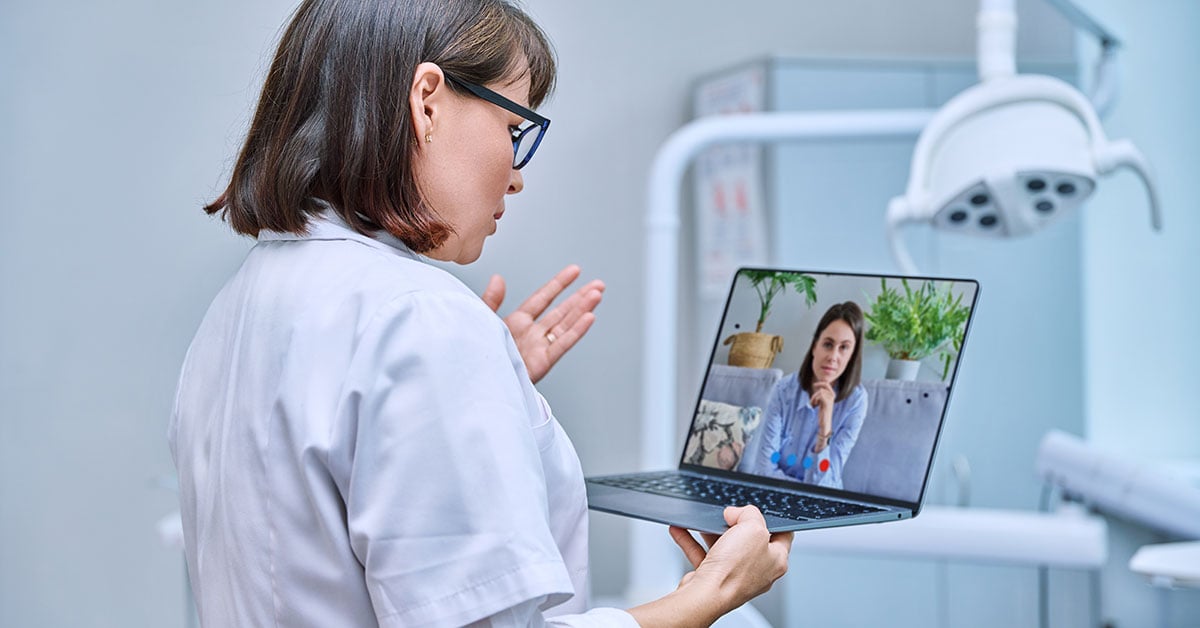Isn’t it always about what’s best for the patient? With that in mind the medical and dental integration discussion has deep relevance.
It’s a conversation that has a decade or more under-its-belt. And patients (while the primary beneficiary) aren’t the only ones who benefit.
Physicians and dentists do as well. But that’s where complexity initially presented a few problems.
Before we discuss the challenges let’s clarify what medical and dental integration is.
Understanding medical and dental integration
Generally, it’s a way to provide care across both health care specialities.
”Medical-dental integration is an approach to care that integrates and coordinates dental medicine into primary care and behavioral health to support individual and population health. Also known as interprofessional practice, or IPP, it has demonstrated positive patient outcomes and reductions in total cost of care. It’s a model of care that holds the patient at the center and allows providers to come up with comprehensive care plans for the whole patient.” [1]
Provider and corporate support for integration is worth noting.
”…patients (79%), dentists (96%), physicians (90%), employers (92%) and Medicaid dental administrators (85%) all believe oral health and overall health are connected. What’s more, they agree that greater collaboration across medical and dental providers would improve patient care.” [2]
And it’s an “idea” that continues to “gain traction.”
”According to a 2020 DentaQuest survey of 254 providers, 85% ‘strongly agreed’ or ‘somewhat agreed’ with the statement: ‘Medical-dental integration (the integration of preventive dental care into primary care settings and medical screenings into oral health settings) is an effective way to improve overall health.’ The model is gaining national attention, too, as the Centers for Disease Control and Prevention (CDC) announced a medical-dental integration partnership in October of 2020.” [3]
With innovation comes challenges (and a few problems). Those associated with medical-dental integration are found in its initial model.
A well-intentioned solution
“Colocation” appeared to be the answer.
”It was initially thought that the solution would be to colocate medical and dental facilities where primary care medical services could be provided during dental appointments, especially for patients with chronic diseases. It would be convenient for a nurse to draw blood for lab tests, review medications, and more while a patient is in the dental chair.” [4]
Still, problems emerge.
- Care involves more than equal proximity
- Collaboration requires clarification
- Payment and reimbursement issues
- Logistics hinder the pace of expansion
- Medical and dental records lack collaborative technology for efficient care integration [5]
Effective collaboration not colocation is a core reality of successful integration between physicians and dentists. Colocation, done well, has potential but your capability to collaborate with a medical professional or specialist requires strategic technology.
A well-timed solution for effective medical and dental integration
The overall telehealth environment has shaped the future of effective integration between physicians and dentists. More specific to you (the dentist) is, of course, teledentistry.
Telemedicine and teledentistry platforms have evolved a lot from their basic technology days. Today’s innovations are more robust and provide enhanced collaboration, image and data sharing, payment and reimbursement management, emergency and triage care, and patient-facing solutions.
Innovation is also expanding into mobile dentistry and creating new opportunities for dental hygienists. Each of these emerging uses of teledentistry make medical and dental integration more beneficial to patients and providers.
Care accountability has produced “accountable care organizations” (ACOs). According to Dental Economics (in a hypothetical example) these providers “want to offer limited but very important dental benefits.” [6]
And…
”Rather than build and staff a dental facility in the medical clinic, an ACO reaches an agreement with a local dentist to oversee a hygienist who will perform services in the medical facility. The hygienist uses a mobile cart and mobile equipment in any open room at the facility for the day.” [7]
This integration example highlights the mobile dentistry and independent hygienist role within medical and dental integration. Within this model the scope of care can be carried over to an in-office dental treatment appointment.
Another integration highlight are the costs associated with medical and dental treatment. The systemic connection dentistry has with overall health is impacting costs.
”For instance, 3.7 million Blue Cross Blue Shield members experienced dental conditions serious enough to generate medical claims in 2016. These individuals also spent twice as much on overall health care costs per year compared to those who didn’t suffer from serious dental conditions.” [8]
All things considered, it’s best to stay-tuned for what’s ahead on the medical-dental integration horizon. Technology will continue to drive innovation within the telehealth and teledentistry environment - a good thing for integrated care, associated costs, and reimbursement potential.
Discover more about medical and dental integration themes in the following teledentistry and mobile dentistry resources:
Improve Continuity of Care and Care Coordination Using Teledentistry
How Teledentistry Creates the Perfect Environment for Shared Decision-Making
Integration thrives as technology innovations evolve
Teledentix is an innovative, turn-key teledentistry solution created by Virtual Dental Care. The all-in-one platform will enable you to adapt teledentistry to your patient care and extend your services beyond the walls of your dental practice…and improve medical-dental integration opportunities.
- Teledentix provides an easy-to-use video conferencing tool that’s secure, HIPAA compliant, and specific to dentistry.
- Teledentix Basic is a perfect starting point. Begin with a free trial and then transition to a very low monthly fee. You and your patients can join unlimited video conferences including screen-share, file-share, video-share, and real-time chat communications.
LEARN MORE about the Teledentix platform.
[1] https://dentaquest.com/oral-health-resources/medical-dental-integration/
[2] https://dentaquest.com/oral-health-resources/medical-dental-integration/
[3] https://dentaquest.com/oral-health-resources/medical-dental-integration/
[4] https://www.dentaleconomics.com/macro-op-ed/technology-trends/article/14189914/driving-medicaldental-integration-with-telehealth-technology
[5] https://www.dentaleconomics.com/macro-op-ed/technology-trends/article/14189914/driving-medicaldental-integration-with-telehealth-technology
[6] https://www.dentaleconomics.com/macro-op-ed/technology-trends/article/14189914/driving-medicaldental-integration-with-telehealth-technology
[7] https://www.dentaleconomics.com/macro-op-ed/technology-trends/article/14189914/driving-medicaldental-integration-with-telehealth-technology
[8] https://www.ahip.org/medical-dental-integration-the-best-of-both-worlds-for-consumers-and-their-health-care-coverage/




